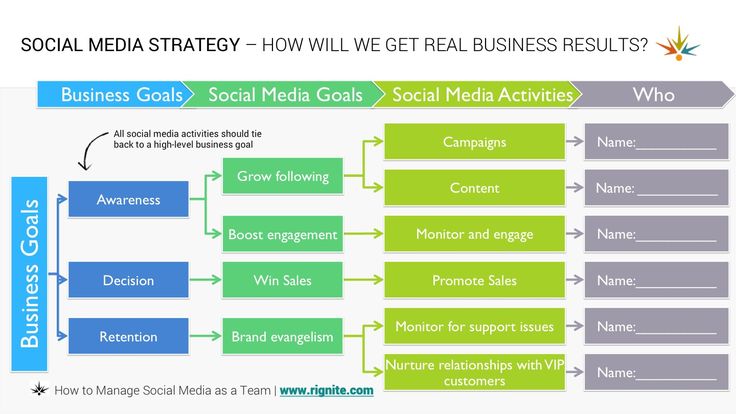
Video aggregators make it easy to manage the many videos you have. They provide search capabilities, recommendations, billing, and billing. You can use them even to find videos related a certain topic. Although choosing the best one is up to you, there are some principles that you can follow when choosing a video aggregator. Below is a list of the most popular video-aggregators.
Organising large amounts of video content
An aggregator is more important than ever as SVOD subscriptions keep increasing. With over 1.74 Billion video subscriptions worldwide, consumers will need help to navigate the massive amount of content. There are many types of aggregators. Some are disruptive players like Amazon, while others are established players such as Pay TV operators. However, everyone agrees that aggregation is vital to the future development of video because it offers consumers and providers a single point-of-billing.
Several factors influence the need for an aggregator. First, consumers want to be able to customize their video content. Second, they expect to find something that meets their particular preferences. This is why streaming services have intensified their efforts in creating a platform. AVOD aggregators can help these consumers by assembling and packaging short clips that are relevant to their interests.
Aggregators offer producers many benefits. Aggregators can negotiate better deals on platforms and help smaller movies find theatrical release. Aggregators are also able to help smaller films find digital distribution options in non-traditional markets. Important to remember that film aggregators are not to be confused with video hosting sites. They are a middleman between creators and distributors, providing localisation, marketing, and technical services.
Although streaming services are growing in popularity, consumers are not satisfied with their user experience. As more big names enter the space, consumers will find it difficult to find and watch their favorite content. Video aggregators will be an important tool in facilitating flexibility and personalization. Accenture's recent study found that most consumers prefer to watch their favorite content on one platform rather than several.
You can search
The need for a video aggregator that makes it easy for consumers to find and consume content is increasing as SVOD subscriptions increase. According to a survey, 62% of pay TV subscribers felt frustrated when trying to find what they were looking for. This frustration has decreased a bit over the last five years, as operators have deployed search and recommendation features to address the frustrations of their subscribers. This space is seeing several approaches.

The streaming video market has many problems. There are many streaming content providers, each with their own apps. This makes it difficult to find the right content. Intellectsoft developed an app to make it easier by aggregating content from multiple providers and specifying which platforms they are available on. These video aggregators can be found all over the internet and are a great way to locate the content that you need.
Although this model is the easiest and most efficient, it can often be the most expensive to implement commercially. Many video aggregators struggle to obtain metadata rights and don't own the content they host. Many resort to scraping techniques instead. Video aggregators often refuse to include revenue sharing or banner advertising in their revenue models. This can limit their ability to achieve the popularity they desire.
News aggregators can be used to locate the most recent news stories and news. These tools can also collect videos related to a particular topic. The most effective video aggregators automatically curate stories for their users. Google News is an excellent example. It curates stories automatically for its users. Google News, in addition to collecting the most current news, is a great video aggregator that collects stories from many sources.
Recommendations
Video aggregators have been growing in popularity because of the increased use of SVOD. These aggregators are becoming an integral part of TV packages. Many consumers are frustrated with the difficulty in finding and accessing content. Recent surveys revealed that nearly half of all pay TV subscribers find it difficult finding content. This percentage has been declining over the past five year. Some aggregators rely solely on super-aggregators. Others have a core company. In both cases, each aggregator will play a key role in particular segments of market.
With more OTT services on the market, the problem becomes even more complex. Not only do subscribers have to navigate multiple services but each service also has its own credentials, payment methods and payment systems. This makes matters even more complicated as video aggregators must obtain metadata rights to their content. Additionally, these aggregators often have very limited revenue models with little or no room for revenue sharing and banner advertising.
Video aggregators offer several benefits. Many are very easy to use as the bulk of the aggregation process happens automatically. In addition, these tools provide a search engine for all available streaming services, reducing the friction associated with multiple websites. As a result, they are more cost-effective for consumers. Here are some top video aggregators.
Film aggregators are essential for the release of indie films. They may help filmmakers get their films onto major VOD and iTunes platforms by putting them there. Though some bad actors have masked as reputable video aggregators, there are still some benefits for filmmakers. These services can help filmmakers build their skills and target younger people.
Billing

The number of SVOD subscribers will increase as the global SVOD market expands. There are over 1.74billion subscribers globally. This will make it difficult for consumers to find the content that interests them. Many roles are available for bill-paying video aggregators. Some are purely aggregators and serve an established industry, such as Pay TV operators. But, in general, they all play important roles in certain segments. These are the most in-demand.
The most basic model, however, is also the most difficult to make commercially. Many video aggregators don’t own their content and have difficulty obtaining metadata rights from content suppliers. Some resort to scraping. The services may not be interested either in advertising banners or revenue-sharing. This is another problem with aggregation income models. The latter two revenue models have several advantages.
Consumers can also benefit from billing video aggregators to simplify their multiple subscriptions. While a single source of video content means better access for subscribers, it doesn't necessarily mean that finding what they want will be easier. According to recent research, 62% of subscribers to pay TV often have difficulty finding what they are looking for. This problem is solved by Aggregation services. They simplify managing multiple subscriptions, increase account management, and suggest content.
Aggregation fees vary widely. They are usually around $1K for a feature-length film. Other fees are smaller. Some aggregators might offer a revenue sharing model that reduces upfront fees. Other aggregators might offer discounts on Compressor and related assets. Some offer discounts to Compressor users and can create assets for them. These costs may not be worth the advantages of the platform. How can I determine which platform will be best for me?
FAQ
How do I begin SEO for my website
It is important to understand the needs of people searching for your company or products through search engines like Google. This will help you get a Google ranking. This guide will teach you how to write high-ranking content on Google. You can also visit our other guides for content marketing.
You'll need to start by creating a plan. Also, think about the keywords you want. There are two types, broad keywords (like "digital Marketing") and specific keywords (like "seo".
You will then need to identify a few goals like increasing brand awareness, driving sales leads, and increasing brand recognition.
Once you've established your objectives, you are ready to start creating content. You can find some helpful tips here on writing content for SEO.
After you have written your content, it is time to post it to your website or blog. If you have a site, this could mean updating the pages. If not, you need to hire web designers who can help you build one.
After publishing your content, link to it from relevant websites and blogs. This will make your content more visible and increase its exposure.
Where can I find my keywords
To find standard terms for your products or services, you will need to first consider the kind of products or customers you are offering. Once you've got your list of phrases, you can use tools like Google Keyword Planner to see what phrases people are searching for or go directly to popular search engines like Bing, Yahoo, and DuckDuckGo.
What are the best tools available for on-page SEO?
Video embeds, image alt tag, structured data martup, internal link structure, and video embeds are the best tools for on page SEO. You can learn more about these types of issues in this article.
Statistics
- If two people in 10 clicks go to your site as a result, that is a 20% CTR. (semrush.com)
- 64% of marketers actively create SEO campaigns because they help hit multiple key performance indicators (KPIs), including increasing traffic, helping your site rank for relevant keywords, improving your conversion rate, and much more. (semrush.com)
- Which led to a 70.43% boost in search engine traffic compared to the old version of the post: (backlinko.com)
- Deleting those 10k pages is one of the main reasons that he improved his site's organic traffic by nearly 90%: (backlinko.com)
- : You might have read about the time that I used The Content Relaunch to boost my organic traffic by 260.7%: (backlinko.com)
External Links
How To
How do I start my first blog.
It's simple! WordPress is an excellent tool for creating a blog. You can edit the appearance of your blog by creating themes, changing fonts, colors, or customizing it. They can also create plugins that will automatically alter certain aspects of the website according to visitor activity.
WordPress.org offers many templates for free and premium templates that are more expensive. Premium templates have additional features, such as more pages, extra plugins and enhanced security.
Once you have downloaded your template you will need a free account to upload your files, and then to manage your blog. While many hosting providers offer free accounts, there are often limitations on how much space you have, how many domains can you host, and how many email addresses you can send.
If you plan to use more domain names, you will also need to purchase separate email addresses. Some hosts charge a monthly subscription fee.
You may be wondering why anyone would pay for a blog to be hosted online if you are new to blogging. Hosts offer unlimited storage space. This means that files can be saved indefinitely and won't be lost if they're accidentally deleted.
Many hosts allow users to host multiple domains. This means you can have multiple sites with the same hosting package. This allows you to sign up for only one email account and manage all your sites via one interface.
Some hosts provide social media sharing buttons to their dashboards. This allows visitors and users to quickly share posts across the Internet.
Most hosting providers provide tools for managing your blog. You can check the performance stats for your site, view how many visitors each article has received, and even compare your traffic to other blogs.
These tools can make managing your blog easier and faster, so they're worth checking out before you choose a hosting plan.
To sum up:
-
You can choose a topic related to your business.
-
Create engaging content;
-
Optimize your site using SEO techniques;
-
Promote your site using social media channels;
-
To make necessary changes, keep an eye on your statistics.
-
Finally, don't forget to update your blog frequently.
The bottom line is to create great content, promote it effectively and measure its success.